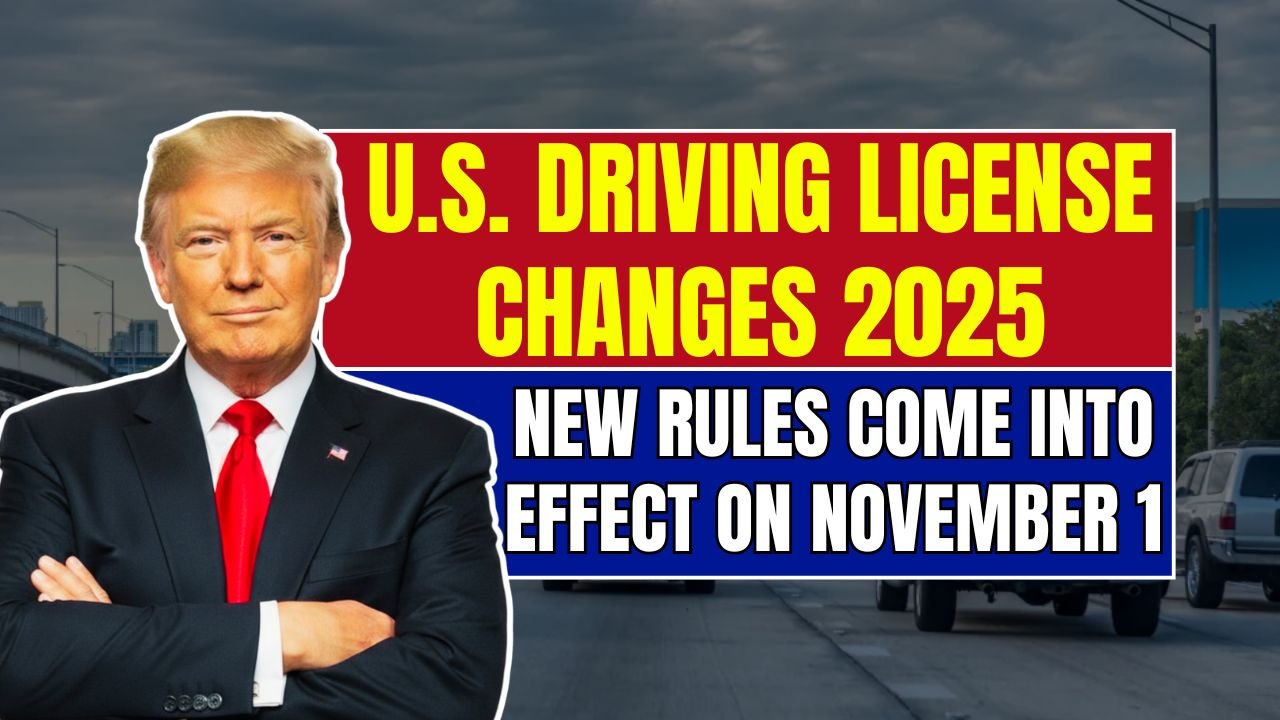Seniors driving in the United States may very well see their days completely different via new federal driving regulations, and November 1, 2025, wouldn’t be too distant in the future for this transformation to occur. These rules, citing 70 as the minimum age of the driver, have an impact across the country. Although this new regulatory framework, as presented by the U.S. Department of Transportation (DOT), has been met with protests from some quarters, it has also found many supporters.
At first, the elderly drivers were apprehensive about the new rules and they compared them to a nightmare, but now they are talking about the experience in terms of “fairness,” “help,” and “empowerment.”
Why were the new rules implemented?
The intention behind these alterations is not to deprive elderly people of their vehicles but to improve road safety, particularly for those who still want to drive at this age.
Now, drivers aged 70 and over will be required to undergo the following procedures:
- Regular Vision Tests
- Reaction Time Tests
- Refresher Driving Courses—to reinvigorate driving skills
Consider it a regular doctor’s appointment for health— the only distinction is that these assessments are of your driving skills, not your health.
Presently, there are nearly 48 million licensed drivers in the US who are 65 years and above. The authorities think that it is time to change the system in accordance with the aging population of the country.
The National Highway Traffic Safety Administration (NHTSA) states that the point of this initiative is to look at the driver’s ability rather than his age. In the words of a DOT representative—
“Age is not the issue, but the ability is going to be rewarded.”
How Different States Are Adopting the New Rules
Although the rules were created at the federal level, each state has adopted its own approach to implementing them. While the process is running smoothly in some states, others have experienced delays or glitches.
| State | Enforcement Method | Main Problem | Senior Opinion |
|---|---|---|---|
| California | Face-to-Face Testing | Long Appointment Waits | “Gradually Getting Better” |
| New York | Mobile DMV Vans Deployed to Centers | Scheduling Issues | “Convenient and fair” |
| Arizona | Regular DMV evaluations | Appeals galore | “Need a little more flexibility” |
| Florida | Telehealth for vision tests | Tech confusion | “Useful for rural areas” |
The current data indicates that around 83% of elderly drivers are not having any difficulties with the test and therefore are passing, whilst roughly 11% are granted with restricted licenses only—like being allowed to drive through the day or for short distances. At the same time, under 3% have their driving licenses completely revoked.
Mixed reactions—but increased confidence
At first, a lot of the elderly people thought the new rules were merely a way to prevent them from driving, but after they took the test, their view changed.
Mary Thompson, an 82-year-old from Ohio, shares, “I was really scared that I would not make it, but when I passed, I felt so proud. My kids are less concerned now.”
This method is being quickly adopted in cities, but older people living in the countryside still find it hard to cope. They consider themselves as being left out because of the few DMV offices and technological barrier. In this regard, the AARP is one of the organizations that, among others, is advocating for improved access to the services for older people in rural areas.
Reporting System—A Sensitive Aspect
Under the new system, doctors, family, or police officers have the option to submit a senior driver for re-evaluation if their condition is a concern.
There were numerous fears that this would result in false reporting because of personal conflicts or misunderstandings. Cases of this kind have been seldom and most of the reports have been made by doctors in a responsible manner, nevertheless, the watchdog groups are demanding for stronger safeguards to be put in place to prevent any abuse.
Restricted Licenses—A Sensible Middle Ground
The Department of Transportation has also put up an alternative that is favorable for older drivers—Restricted Licenses. This implies that in case the driving skill of an individual has slightly deteriorated, he/she will not be completely prevented from driving but will rather have limited access, and the restrictions could include:
- Driving only in daylight
- Driving only within their local area or within a certain distance
Many seniors find this option extremely practical.
“I don’t like driving at night anyway. Now I can remain independent and not pose a risk to others.”
It is true that insurance companies have been supporting this initiative as well. They are the ones who have mentioned that senior driver accident claims have started to reduce, thereby, indicating the effectiveness of this policy. This is a great sign.
Changes in Travel Patterns
These regulations have another indirect effect that they have considerably increased the number of older citizens using alternative means of transport.
The over 70s on ride-sharing services like Uber and Lyft are gradually becoming more to the point. In fact, some municipalities are already offering discounted fares for seniors in these services.
Nevertheless, this convenience is not so easily accessible in the countryside. Seniors who can no longer drive but live in rural areas with no public transport or ride-sharing available are likely to experience solitude and social isolation. Experts indicate that this may have a negative impact on their mental and physical health.
Future Direction—Major Evaluation in 2026
The Department of Transportation will conduct a full review of this program in March 2026. It will examine the following aspects:
- New data on road accidents
- Outcomes of appeal cases
- Effectiveness of the testing system
Based on these findings, some future changes may be considered, such as:
- Changes in the age limit for testing
- Expanding telehealth access
- Increasing the number of mobile DMV units
Current data indicates that the program is succeeding—
Senior drivers are feeling more confident, road accidents are decreasing, and there is a growing understanding in society that age does not always equate with risk.
Conclusion: Balancing Dignity and Safety
In the words of U.S. Transportation Secretary Pete Buttigieg—
“We are learning as we go. But our goal is clear—safe roads and dignity for every driver who has earned it.”
The alteration of the driving rule is not solely a legal modification, but it also indicates a change in society’s perspective – a perspective that gives equal priority to the autonomy, safety, and dignity of the elderly.
The US’s action may turn out to be a motivating factor for other nations to follow suit in the coming years, especially those where the demographic is getting older quickly and road safety is becoming an increasing issue.
FAQs
Q1. What is the new federal driving rule for seniors in the U.S.?
Starting November 1, 2025, all drivers aged 70 and above must take regular vision tests, reaction-time checks, and refresher driving courses to keep their licenses active.
Q2. Are seniors losing their driving licenses under this rule?
No, most seniors (over 80%) are passing easily. Only a small percentage receive restricted licenses or lose them due to safety concerns.
Q3. Who can report an elderly driver for re-evaluation?
Doctors, family members, or police officers can file a report if they believe a senior driver may pose a safety risk.
Q4. What is a restricted license?
A restricted license allows seniors to drive under certain conditions — for example, only during the daytime or within a limited local area.
Q5. When will the new rules be reviewed again?
The U.S. Department of Transportation will conduct a full review of the program in March 2026 to assess its impact and make improvements.


